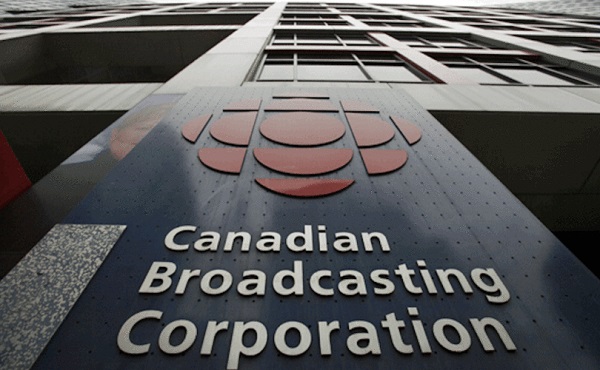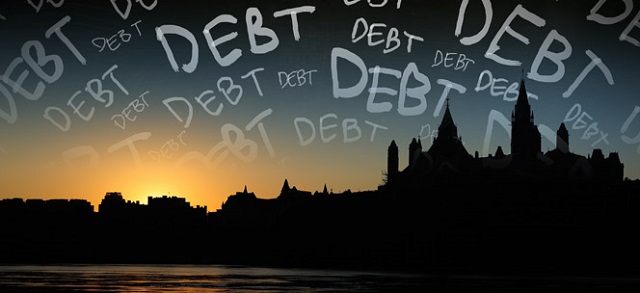Business
Downtown Red Deer: safe, fun and open for business!

By Mark Weber
With summer just around the corner, downtown Red Deer is all the more bustling with fun events and even more local businesses to check out. But there are a few misconceptions about the area that persist, and that can even prevent some folks from visiting the city’s increasingly vibrant core. “Downtown Red Deer has an always lot of good things going for it,” explained Amanda Gould, executive director of the Downtown Business Association. “Sometimes, that is outweighed by the perception people have of downtown. “What we need to remember is all that has been happening downtown, what with the murals, the events, the alley upgrades – there are a lot of good things happening. And it’s making it such a great destination to come and visit and to also set up your business,” she added.
“We have seen, over the last year, an increase of 50 new businesses downtown. It’s great news, and the downtown is a great place to go.” As mentioned, however, certain misconceptions about the downtown area persist including that
there is a significant parking problem. “We absolutely do not have a parking issue,” noted Gould. Visitors may not always be able to park directly in front of their destinations, particularly if they are in a facility with lots of other businesses and agencies, but there are typically plenty of places to park nearby if you are prepared for a short jaunt. “If you were to travel just a half a block down the street, or even a block down, you will find there are usually plenty of spaces. We are lucky that our downtown is walkable as well.”
She also mentioned that some residents believe that downtown Red Deer is unsafe. “Again, this is a misperception – it’s not the reality of it,” she said. “We are so lucky as a neighbourhood downtown to have our own RCMP policing unit everyday – they chat with business owners and help them solve any safety issues they may come into contact with,” she said. “There is a team of seven on that unit, and surely that makes downtown one of the safest places to be.”
As to the surge in businesses, Gould noted that reasonable rents attract local entrepreneurs to launch ventures there as well – nicely adding to the growing variety of businesses in the area. It’s yet another plus for Red Deer residents.

In the meantime, one of downtown’s most prominent features – the Ross Street Patio – is really starting to liven up these days with the warmer weather and regularly scheduled musical performances. ‘Music on the Ross Street Patio’ is a free event and is open to all ages. Performances run from 4:30 –7:30 p.m. on show nights. Another annual favourite, the Downtown Market, kicks off on Wednesday, May 25. An accredited farmers’ market, visitors are invited to come down and purchase all their fresh fruits and veggies between 3:30 and 6:30 p.m. each Wednesday. Live music on the Ross Street Patio is also a key feature on Wednesdays.
Gould added that Friday, May 27, is the official kick-off to summer on the Ross Street Patio. To celebrate, they have partnered with Sawback Brewing to introduce a limited-edition Ross Street Patio beer which is super exciting, she explained. “Free samples will be available at 5 p.m. that day (May 27). There will also be music and other activities. The special beer, featured at several downtown restaurants, will be available through the summer.

Looking into June, performances on the Patio will run on Wednesdays, Thursdays and Fridays. “Businesses are now opening up their patios – and we’ve got the music happening on the Patio, so we are really starting to see a lot more people coming down, spending some time outside and enjoying the live music that we are putting on,” she said.
For more about the Downtown Business Association and all that is planned for the Ross Street Patio, find them on Facebook or visit www.downtownreddeer.com.
Business
CBC’s business model is trapped in a very dark place

I Testified Before a Senate Committee About the CBC
I recently testified before the Senate Committee for Transport and Communications. You can view that session here. Even though the official topic was CBC’s local programming in Ontario, everyone quickly shifted the discussion to CBC’s big-picture problems and how their existential struggles were urgent and immediate. The idea that deep and fundamental changes within the corporation were unavoidable seemed to enjoy complete agreement.
I’ll use this post as background to some of the points I raised during the hearing.
You might recall how my recent post on CBC funding described a corporation shedding audience share like dandruff while spending hundreds of millions of dollars producing drama and comedy programming few Canadians consume. There are so few viewers left that I suspect they’re now identified by first name rather than as a percentage of the population.
Since then I’ve learned a lot more about CBC performance and about the broadcast industry in general.
For instance, it’ll surprise exactly no one to learn that fewer Canadians get their audio from traditional radio broadcasters. But how steep is the decline? According to the CRTC’s Annual Highlights of the Broadcasting Sector 2022-2023, since 2015, “hours spent listening to traditional broadcasting has decreased at a CAGR of 4.8 percent”. CAGR, by the way, stands for compound annual growth rate.
Dropping 4.8 percent each year means audience numbers aren’t just “falling”; they’re not even “falling off the edge of a cliff”; they’re already close enough to the bottom of the cliff to smell the trees. Looking for context? Between English and French-language radio, the CBC spends around $240 million each year.
Those listeners aren’t just disappearing without a trace. the CRTC also tells us that Canadians are increasingly migrating to Digital Media Broadcasting Units (DMBUs) – with numbers growing by more than nine percent annually since 2015.
The CBC’s problem here is that they’re not a serious player in the DMBU world, so they’re simply losing digital listeners. For example, of the top 200 Spotify podcasts ranked by popularity in Canada, only four are from the CBC.
Another interesting data point I ran into related to that billion dollar plus annual parliamentary allocation CBC enjoys. It turns out that that’s not the whole story. You may recall how the government added another $42 million in their most recent budget.
But wait! That’s not all! Between CBC and SRC, the Canada Media Fund (CMF) ponied up another $97 million for fiscal 2023-2024 to cover specific programming production budgets.
Technically, Canada Media Fund grants target individual projects planned by independent production companies. But those projects are usually associated with the “envelope” of one of the big broadcasters – of which CBC is by far the largest. 2023-2024 CMF funding totaled $786 million, and CBC’s take was nearly double that of their nearest competitor (Bell).
But there’s more! Back in 2016, the federal budget included an extra $150 million each year as a “new investment in Canadian arts and culture”. It’s entirely possible that no one turned off the tap and that extra government cheque is still showing up each year in the CBC’s mailbox. There was also a $93 million item for infrastructure and technological upgrades back in the 2017-2018 fiscal year. Who knows whether that one wasn’t also carried over.
So CBC’s share of government funding keeps growing while its share of Canadian media consumers shrinks. How do you suppose that’ll end?
We make content free for you but we require support to create journalism. Please consider a free subscription to our newsletter, or donate an amount of your choice.
Business
PBO report shows cost of bureaucracy up 73 per cent under Trudeau

From the Canadian Taxpayers Federation
The Canadian Taxpayers Federation is calling on the federal government to rein in the bureaucracy following today’s Parliamentary Budget Officer report showing the bureaucracy costs taxpayers $69.5 billion.
“The cost of the federal bureaucracy increased by 73 per cent since 2016, but it’s a good bet most Canadians aren’t seeing anywhere close to 73 per cent better services from the government,” said Franco Terrazzano, CTF Federal Director. “Taxpayers are getting soaked because the size and cost of the federal bureaucracy is out of control.”
Today’s PBO report estimates the federal bureaucracy cost taxpayers $69.5 billion in 2023-24. In 2016-17, the cost of the bureaucracy was $40.2 billion. That’s an increase of 72.9 per cent.
The most recent data shows the cost continues to rise quickly.
“Spending on personnel in the first five months of 2024-25 is up 8.0 per cent over the same period last year,” according to the PBO.
“I have noticed a marked increase in the number of public servants since 2016 and a proportional increase in spending,” said Parliamentary Budget Officer Yves Giroux. “But we haven’t seen similar improvements when it comes to service.”
The Trudeau government added 108,793 bureaucrats since 2016 – a 42 per cent increase. Canada’s population grew by 14 per cent during the same period. Had the bureaucracy only increased with population growth, there would be 72,491 fewer federal employees today.
The government awarded more than one million pay raises to bureaucrats in the last four years, according to access-to-information records obtained by the CTF. The government also rubberstamped $406 million in bonuses last year.
“The government added tens of thousands of extra bureaucrats, rubberstamped hundreds of millions in bonuses and awarded more than one million pay raises and all taxpayers seem to get out of it is higher taxes and more debt,” Terrazzano said. “For the government to balance the budget and provide tax relief, it will need to cut the size and cost of Ottawa’s bloated bureaucracy.”
-

 Brownstone Institute1 day ago
Brownstone Institute1 day agoThe Most Devastating Report So Far
-

 Business1 day ago
Business1 day agoCarbon tax bureaucracy costs taxpayers $800 million
-

 ESG1 day ago
ESG1 day agoCan’t afford Rent? Groceries for your kids? Trudeau says suck it up and pay the tax!
-

 COVID-192 days ago
COVID-192 days agoDr. McCullough praises RFK Jr., urges him to pull COVID shots from the market
-

 Daily Caller1 day ago
Daily Caller1 day agoLos Angeles Passes ‘Sanctuary City’ Ordinance In Wake Of Trump’s Deportation Plan
-

 John Stossel1 day ago
John Stossel1 day agoGreen Energy Needs Minerals, Yet America Blocks New Mines
-

 Alberta1 day ago
Alberta1 day agoProvince considering new Red Deer River reservoir east of Red Deer
-

 MAiD2 days ago
MAiD2 days agoOver 40% of people euthanized in Ontario lived in poorest parts of the province: government data








